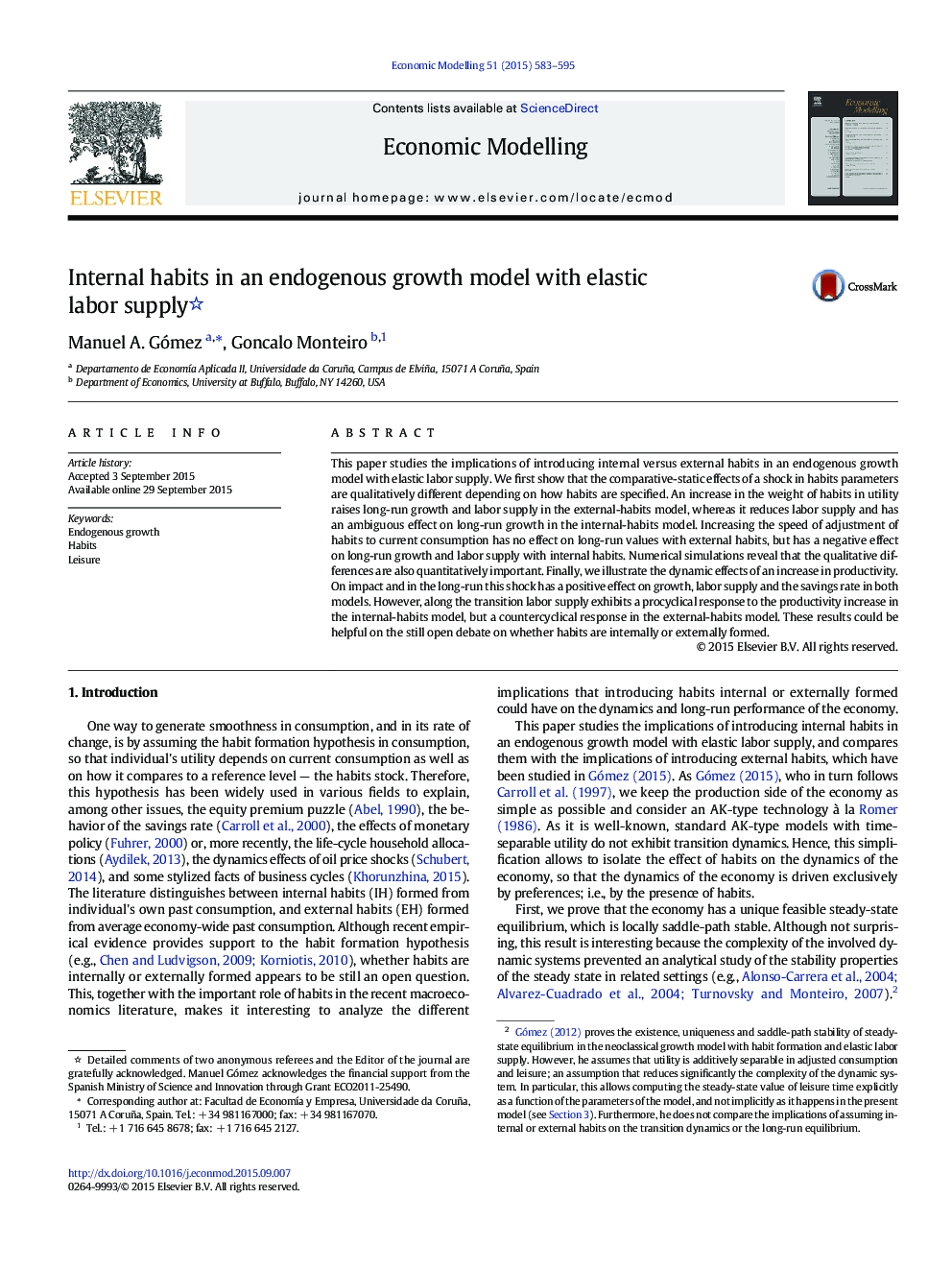| Article ID | Journal | Published Year | Pages | File Type |
|---|---|---|---|---|
| 5053752 | Economic Modelling | 2015 | 13 Pages |
Abstract
This paper studies the implications of introducing internal versus external habits in an endogenous growth model with elastic labor supply. We first show that the comparative-static effects of a shock in habits parameters are qualitatively different depending on how habits are specified. An increase in the weight of habits in utility raises long-run growth and labor supply in the external-habits model, whereas it reduces labor supply and has an ambiguous effect on long-run growth in the internal-habits model. Increasing the speed of adjustment of habits to current consumption has no effect on long-run values with external habits, but has a negative effect on long-run growth and labor supply with internal habits. Numerical simulations reveal that the qualitative differences are also quantitatively important. Finally, we illustrate the dynamic effects of an increase in productivity. On impact and in the long-run this shock has a positive effect on growth, labor supply and the savings rate in both models. However, along the transition labor supply exhibits a procyclical response to the productivity increase in the internal-habits model, but a countercyclical response in the external-habits model. These results could be helpful on the still open debate on whether habits are internally or externally formed.
Keywords
Related Topics
Social Sciences and Humanities
Economics, Econometrics and Finance
Economics and Econometrics
Authors
Manuel A. Gómez, Goncalo Monteiro,
